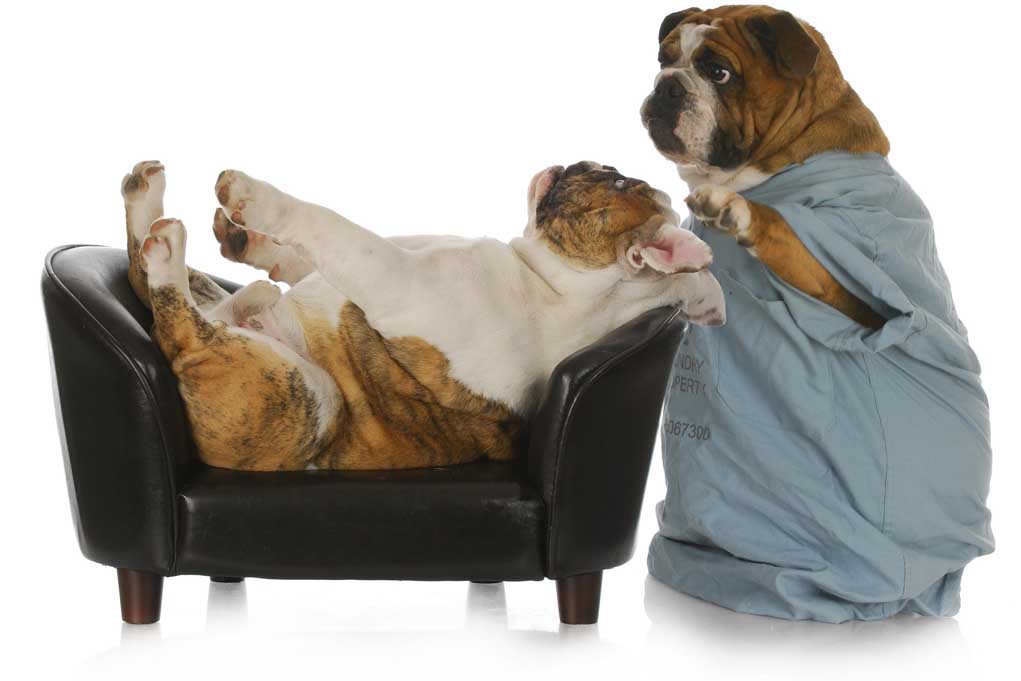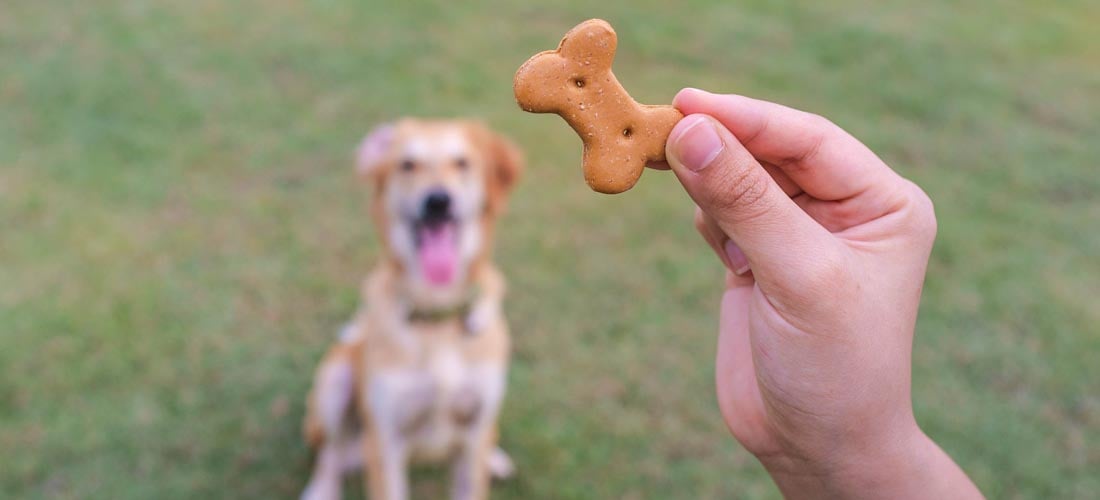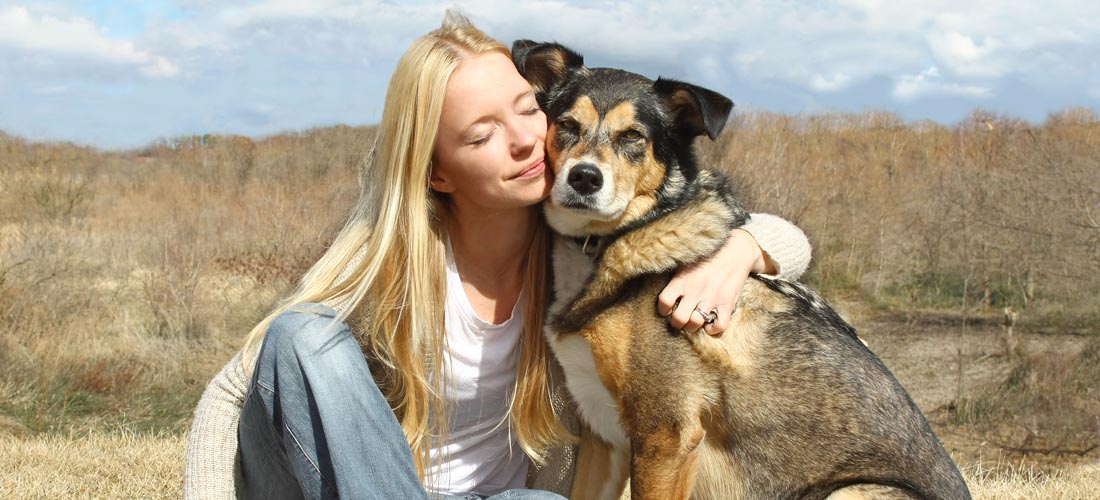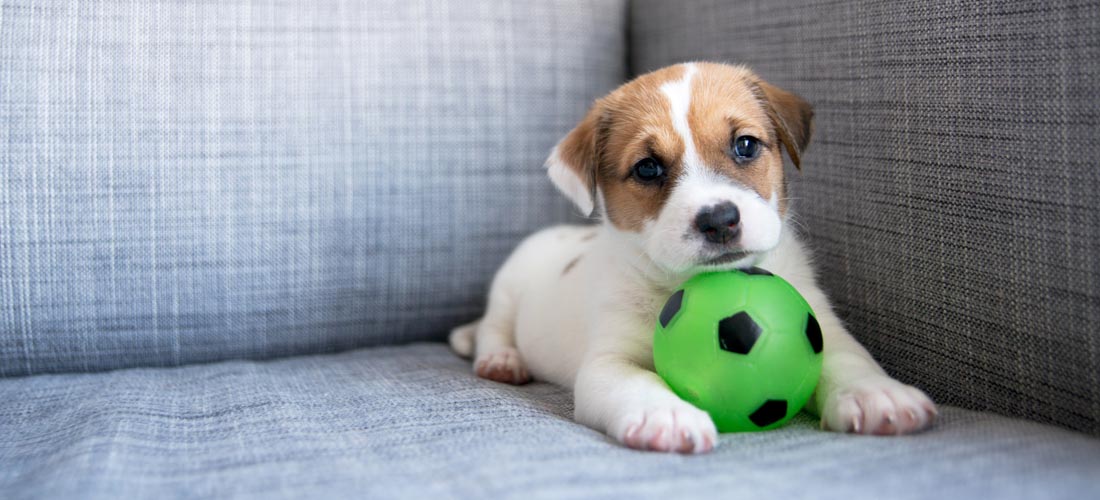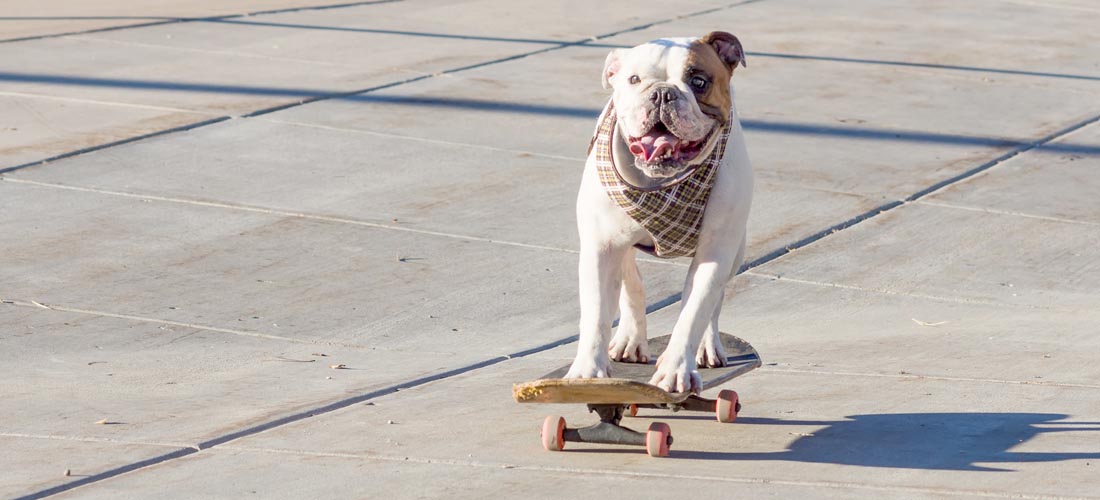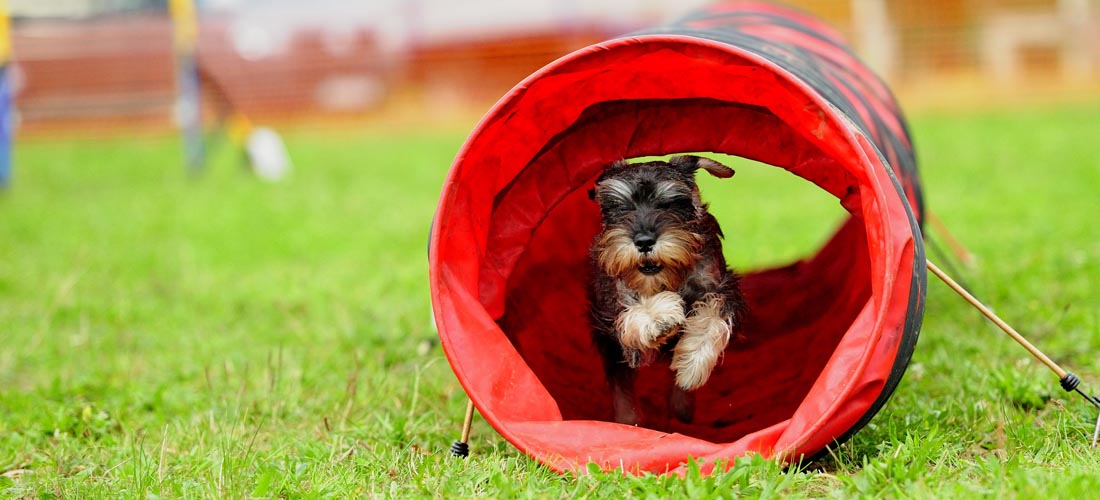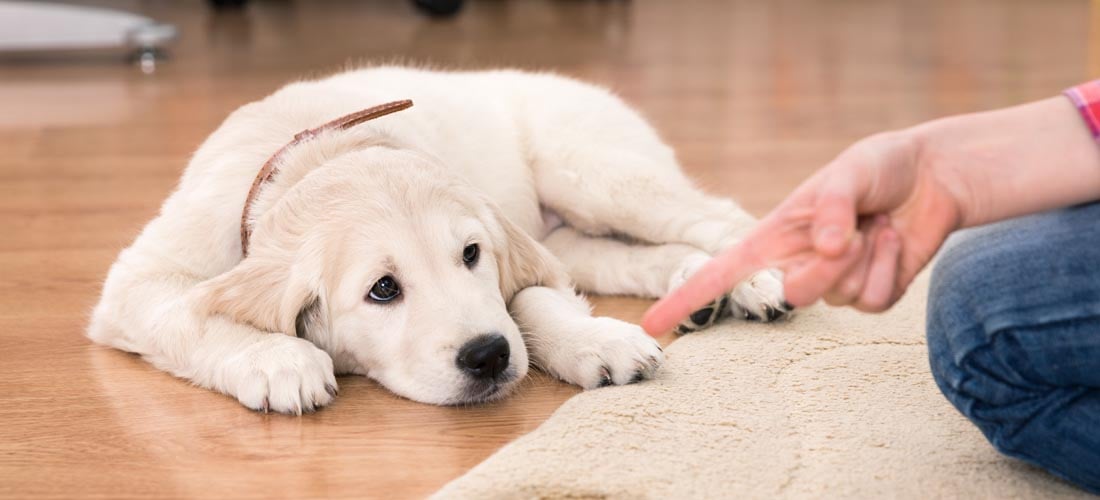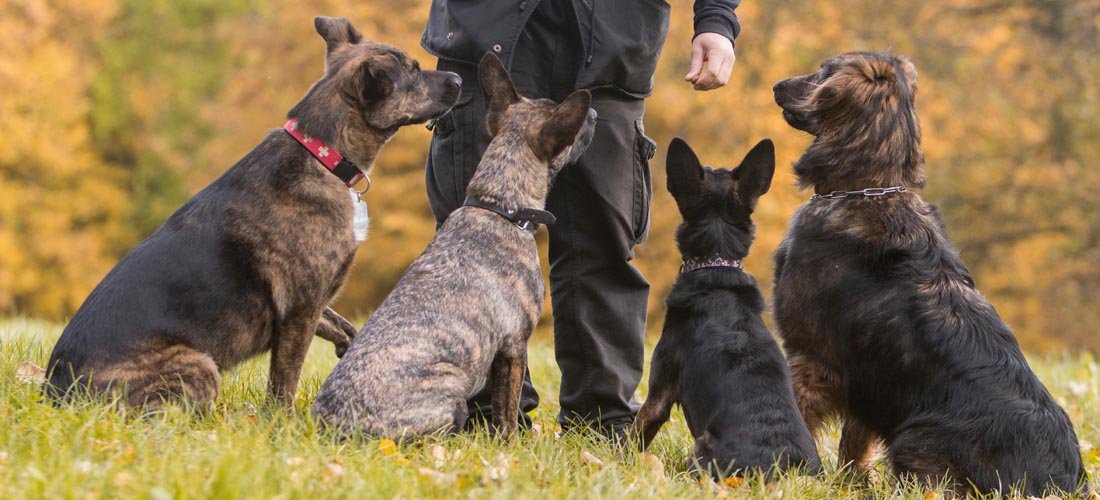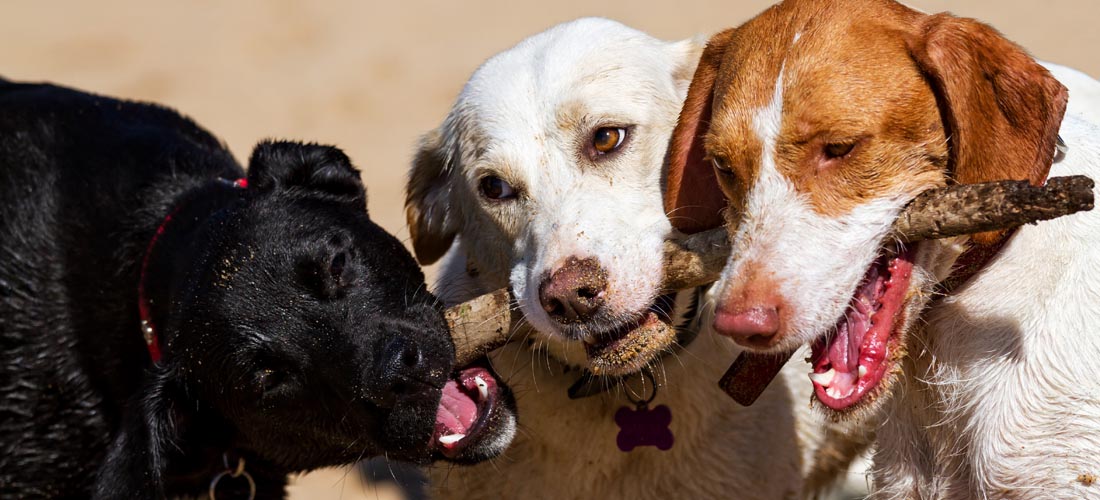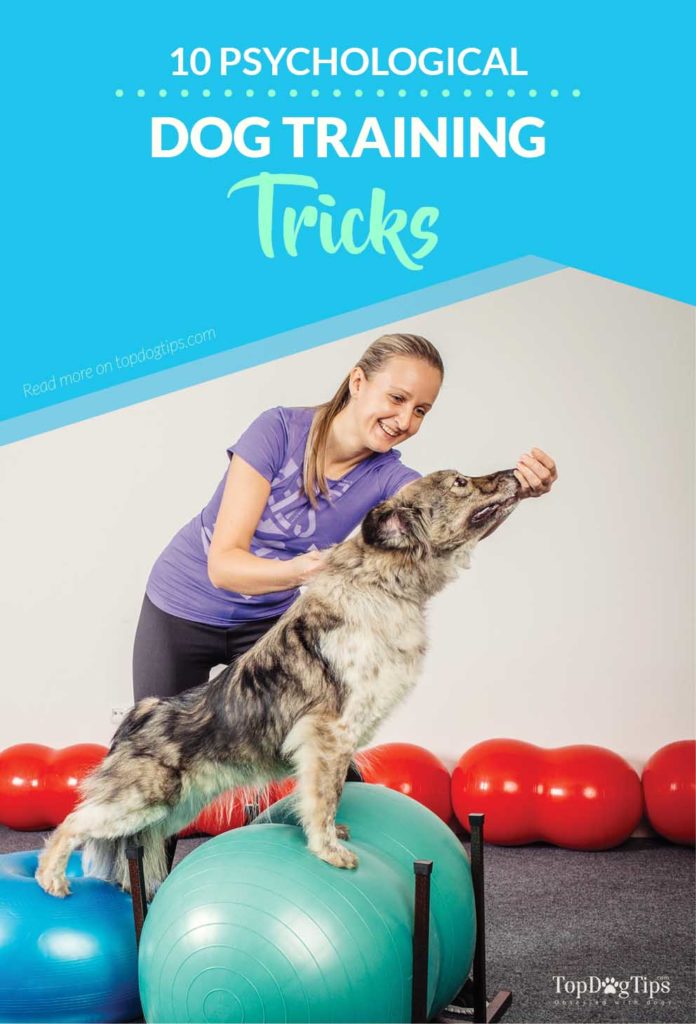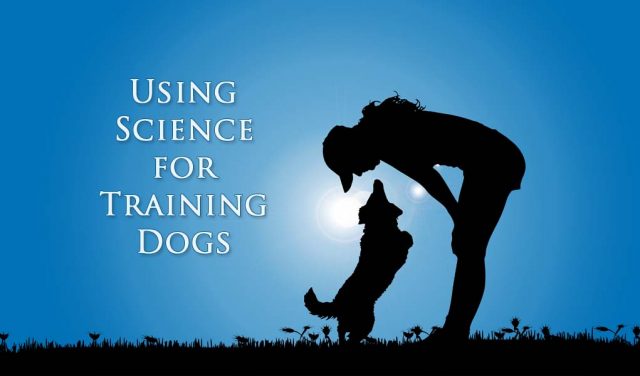
Table of Contents
- 10 Psychological Dog Training Tricks (with the Psychology behind them explained)
- 1 Use Pavlov’s method of classical conditioning to acquire a desired response to a stimulus.
- 2 Fulfill one of Maslow’s basic needs and teach your dog a new trick with primary reinforcers.
- 3 Supplement primary reinforcement with secondary reinforcers to see long-lasting dog training results.
- 4 Use negative reinforcement through the removal of stimulus to encourage good behavior.
- 5 Try a fixed-ratio schedule of reinforcement to train your dog to perform complex and multi-step tricks.
- 6 Utilize successive approximation and shaping to accomplish a more difficult specific goal behavior.
- 7 Avoid negative punishment to prevent learned helplessness in your dog.
- 8 Take advantage of Tolman’s theory of latent learning to train your dog without reinforcers.
- 9 Use the combination of “old dog” and observational learning to teach the tricks.
- 10 Use applied behavior analysis to address poor social behavior with your dog.
- Final disclaimer
Dog training is one of the most demanding and difficult aspects of welcoming any new canine to the family.
Sometimes, it seems that sit and stay are the hardest tasks known to a man (or a dog).
But have you tried looking into the science of dog training and the psychology behind it?
It may just turn the whole process into a walk in a dog park!
As a student and practitioner of psychology as well as a dog owner, my curiosity about applying the science to training dogs and trying it out with my own pooches was to be expected.
I've been researching this field for a few years now and will share ten of the best potential dog training tricks that can be explored based on many theories coming from the science of human psychology and canine research.
It's likely you already knew some of them, but isn't it curious to know exactly how these dog training techniques came to be?
* To make matters simpler for you, I reference primarily one source – research of Saundra K. Ciccarelle, PhD of Gulf Coast Community College and J. Noland White, PhD of Georgia College & State University – whose book and papers encompass all further studies related to the aforementioned psychology science under each subsection.
10 Psychological Dog Training Tricks (with the Psychology behind them explained)
1 Use Pavlov’s method of classical conditioning to acquire a desired response to a stimulus.
It's only fair that we start here. Classical conditioning of dogs, which was researched extensively by behaviorist and physiologist Ivan Pavlov, is a process by which a stimulus becomes associated with a specific response.
As a result, the response will occur unconsciously at any time at which the stimulus is present [1].
Give classical conditioning a try next time you take your dog for a walk.
If your pet often seems to need to “go out” immediately after coming inside from a long walk, classical conditioning will encourage your dog to relieve themselves during your walk, solving the “in and out” shenanigans.
In a sense, this style of conditioning as applied to dog training is similar to that of training small children to go to the bathroom before they go to bed to avoid a bed-wetting incident.
After some time, a child will be conditioned to go every night before bed. Similarly, after some time, your dog will be conditioned to go during the walk as opposed to immediately afterward.
Here’s how it works:
Every time your dog properly relieves themselves outside, ring a bell.
After some time of conditioning, the bell will become a conditioned stimulus that will, upon ringing, cause your dog to urinate almost involuntarily.
To put your new dog training expertise into action, ring the bell towards the end of your walk once you have conditioned your dog.
This will trigger your dog to “empty the tank,” and you will no longer be faced with a constant need to let your dog in and out.
(Ciccarelli and White, 2006, 171-173)
2 Fulfill one of Maslow’s basic needs and teach your dog a new trick with primary reinforcers.
According to psychologist Abraham Maslow, most living beings have a hierarchy of needs, often presented in a pyramid.
While these needs range from species to species, the base of the pyramid illustrates needs shared by nearly all species; they are known as basic needs [2], and they represent what is necessary for survival, such as food, water, and touch.
The satisfaction of hunger, thirst, and pleasure is a basic need in all animals.
As a result, they can be harnessed in operant conditioning (voluntary) to be used as rewards for pet training.
To implement a primary enforcer, pet your dog after they do a simple trick, such as sitting down on their own. Then, begin to pet your dog only when they sit down on command.
As you reinforce your dog's good behavior by filling a basic need, you are conditioning your dog to enjoy the trick and the reward that they receive from it, and after repeated reinforcement, your dog will happily sit on command in order to receive the positive reinforcement of the reward!
(Ciccarelli and White, 2006, 181-182; 351-353)
3 Supplement primary reinforcement with secondary reinforcers to see long-lasting dog training results.
While primary reinforcers in dog training, such as using treats or petting your dog, may be sufficient to initially teach your canine a new trick, it may become difficult to continue the reinforcement without risking negative consequences such as weight gain or begging as a result of continuous petting and attention (there's an interesting article related to this, aptly called “Is Your Dog a Gambling Addict?“).
In addition, there is a risk of extinction of the trick if a primary reinforcer is not referenced every time.
This is absolutely natural not only to dogs but to humans as well (and is the basis of how habits are created).
Here's what you do:
Instead of continually offering only primary reinforcement for good behavior, begin accompanying the reinforcement with praise.
Similar to Pavlov's method of classical conditioning I talked about above, after several attempts with the new reinforcement, your dog will associate not only the food but also the praise with performing the desired trick [3].
After a while, the implementation of this reinforcer will actually be interpreted as satisfying the same need as the primary reinforcer.
Once the new reinforcer is conditioned, a simple “Good Dog!” command will be all it takes to have your pup wriggling with pleasure after their good behavior.
(Ciccarelli and White, 2006, 182)
4 Use negative reinforcement through the removal of stimulus to encourage good behavior.
Contrary to popular belief, negative reinforcement is not necessarily (as a rule) the addition of a negative consequence, such as pain; rather, it is the removal of an unpleasant stimulus, such as cold weather.
Negative reinforcement functions not by rewarding exceptional behavior, such as a trick, but rather by encouraging generally good behavior in dogs.
If you have a new puppy, negative reinforcement can be particularly beneficial to train them to behave well when home alone [4].
If you'd like to read more on this matter, I recommend some articles from one of the best dog trainers out there, Patricial McConnell, PhD and particularly this article on the “negatives and positives”.
For now, let's get back to our negative reinforcement and how you can use it effectively in your dog training tasks.
Here's what you can do:
Start with housebreaking your dog using dog pee pads. Begin to train your puppy while you are home to prevent accidents and other puppy-related mishaps.
With this method, you can begin by placing the puppy alone in a safe and warm but empty room.
The puppy may become lonely, which may cause barking or whining. However, do not immediately tend to the puppy when he begins to whine.
Start in small increments, such as 5 to 15 minutes of “alone time” for the puppy before removing the unpleasant stimulus – loneliness – and beginning to play and interact with the puppy again.
Then, start increasing the increments in which you interact with the puppy.
Over time, the puppy will learn that the schedule of alone time will vary.
As a result, they will become less dependent on the reinforcement in small increments and will soon be able to stay home alone for long periods of time without whining or barking.
(Ciccarelli and White, 2006, 183)
5 Try a fixed-ratio schedule of reinforcement to train your dog to perform complex and multi-step tricks.
In this component of operant conditioning, the reinforcement is provided based upon a certain ratio of behavior to reinforcement.
On a simple level, this can be a dog treat or praise after your dog performs the desired behavior every three times [5].
For advanced dog training techniques, however, reinforcement is offered every time your dog performs a desired sequence of tricks.
Here's what you do:
To establish the fixed ratio, you must first establish a base.
In this case, your dog should know every trick within the sequence before they can perform the sequence.
Do not even attempt this before you teach your dog the most basic commands, and you know that your pup knows how to perform them.
Once you have at least a few basics, begin establishing the ratio by rewarding your dog only after the entire trick sequence is performed. The best and simplest sequence to begin with just two tricks: sit and stay.
Only reward your dog when they sit and stay. If you reward a dog after only one of the actions in the sequence is performed, it is possible that the association between the reward and the sequence will dwindle, and you need to go back to the drawing board.
Keep in mind that the most important component of this style of conditioning is repetition on a schedule [6], which enforces the continuation of the behavior.
(Ciccarelli and White, 2006, 184-185)
6 Utilize successive approximation and shaping to accomplish a more difficult specific goal behavior.
Similarly to a fixed-ratio schedule of reinforcement, successive approximation and shaping are designed to condition more complex dog training tricks and behaviors.
However, whereas a fixed-ratio schedule of reinforcement rewards your canine only after the entire sequence is performed from start to finish, successive approximation progressively rewards your dog after each portion of the sequence.
To use the science of successive approximation in dog training, you first need to decide what the desired behavior is [7].
As Alexa Royle describes it here, this behavior can be complex, but it must be tied to an action that is already easily performed – such as walking through a hoop placed at ground level.
The desired trick, however, can be more difficult, such as jumping through a hoop one foot above ground level.
Here's what you do:
As you begin training your dog, reward him every time he successfully walks through the hoop at ground level.
Once this trick is performed correctly, raise the hoop so that it is slightly above ground level. Now, reward your puppy every time they successfully pass through the raised hoop.
Through the principles of successive approximation, which state that the goal should be altered after each successful attempt at the trick, continue to raise the hoop as you reward your puppy until they can successfully jump through a hoop that is raised one or more feet above ground level.
This type of science-based dog training technique is extremely beneficial in that it has a low likelihood of extinction; since the reward and desired behavior are frequently modified, the occasional lack of reinforcement after the trick will not cause your dog to stop performing the trick.
(Ciccarelli and White, 2006, 192)
7 Avoid negative punishment to prevent learned helplessness in your dog.
Using negative punishment in dog training is not exclusive to unethical animal treatment; there are other reasons not to use this method in your dog training practice.
Multiple studies have shown that while it may appear to be a temporarily effective solution, negative punishment in dogs can be problematic in long-term situations due to its tendency to lead to abuse and the likelihood of learned helplessness in animals.
Some owners are often confused by the infamous terms negative/positive punishment and negative/positive reinforcement. Note that these are not identical and are often misused when explaining dog training methods. Here's a good blog post explaining the background of these terms in general.
This is how negative punishment works:
Initially, negative punishment can cause your animal to fear the punishment, thereby he will avoid it as a result.
Whereas your dog may have shown poor behavior without shame, following negative punishment, your dog is likely to display the bad behavior and then run and hide.
This provides no solution to ending the behavior. Instead, it causes anxiety in your dog and creates a ton of additional behavioral problems.
Furthermore, your dog's anxiety could lead to learned helplessness, in which, following a persistent failure to succeed due to anxiety from the punishment, your pet may develop a sense of powerlessness that can cause depression and further poor behavior.
In the most basic sense, your dog will not even bother to alter the behavior to avoid the said negative punishment because it appears that punishment is inevitable.
To avoid such counter productive dog training practice, stick to what we know has been proven to work (things I've mentioned above and talk about below).
Ultimately, by avoiding negative punishment, you can successfully avoid further poor behavior while properly and safely training your dog in an ethical way [8].
(Ciccarelli and White, 2006, 188-190; 199-200)
8 Take advantage of Tolman’s theory of latent learning to train your dog without reinforcers.
In one of the most well-known psychological experiments in learning, psychologist Edward Tolman has discovered something fascinating that can now be applied in your dog training practice.
Let me tell you about the experiment:
Tolman started out the experiment by placing several groups of rats in a maze.
In the first group, the rats received reinforcement in the form of food after every correct attempt from the beginning of the experiment to its termination sixteen days later.
The second group of mice received no reinforcement for nine days and were forced to navigate the maze without any reward.
Then, on the tenth day, a reinforcement was added, and the mice, having already learned the majority of the maze, were able to complete it almost immediately. The mice demonstrated latent learning [9], in which the effects of the learning remain hidden until reinforcement is implemented.
This is how you do it:
To train your dog using the techniques of latent learning, attempt to teach them to perform a trick, such as weaving through several obstacles, without reinforcement.
While it may take the same amount of time for your dog to perform the trick without reinforcement, the effects of latent learning will soon be apparent.
When you offer the reinforcer after several days, your dog will be able to perform the desired task quickly and efficiently. Latent learning is especially valuable when the reinforcer is food; it prevents your pet from overeating and gaining weight from the reward, making for an efficient and effective dog training method.
(Ciccarelli and White, 2006, 197-198)
9 Use the combination of “old dog” and observational learning to teach the tricks.
Some say that you may not be able to teach an old dog new tricks; however, what most dog trainers don't know is that you can encourage that old dog to train your new puppy through observational learning.
Pioneered by Albert Bandura, who studied the effects of observation on conditioning, observational learning occurs when a behavior is learned by watching a model perform the desired behavior.
This technique can be applied to dogs as well as people and is especially useful if you have two or more dogs.
Here's how to do this:
The tactics of using observational learning in dog training are simple. When you have both dogs in the same area, ask the older, well-trained dog to perform an already known trick and reward them when they perform correctly.
Continue this technique every time both dogs are near each other.
Based on the principles of this, your new, younger dog will soon be able to perform the behavior on command – even without ever performing it before – because they have observed that a reward will follow.
In fact, the behavioral science of dogs emulating other dogs has been covered in canine research [10], and psychologist and canine expert Stanley Coren, PhD has written an article on this.
Don't forget this:
There are four key elements to keep in mind when trying observational learning in dog training: attention, memory, imitation, and motivation.
Based on these four key elements, there are a few “dos and don’ts” of observational learning, as has been extensively covered in related research [10]. Keep the following in mind:
- Do not attempt to train your dog in a busy or distracting area.
- Do make sure that a dog has the memory capacity to recall the benefits of performing the behavior.
- Do not expect a puppy to be able to perform an entire trick sequence while he's still developing.
- Do not provide secondary reinforcers when they have not been established in a new dog.
So long as these four elements are acknowledged and applied to your training, the effective and nearly effortless benefits of observational learning will be highly advantageous in training your dog.
(Ciccarelli and White, 2006, 201-203)
It can be fairly easy to train your dog to sit, stay, and even roll over, especially if you have applied any of the past nine science-based dog training techniques I've mentioned.
However, it can be incredibly difficult to train a dog to demonstrate positive social behavior, especially if your pet has experienced other owners or has an unknown past. This issue was well-described by a few veterinarians in this article.
This is what you need to know:
Applied behavior analysis – which is the modern term for a form of functional analysis and behavior modification that uses a variety of behavioral techniques to achieve a desired behavior – takes advantage of a wide range of techniques for modification, including shaping, successive approximation, and analysis [11].
In humans, this psychological technique is often applied to people with autism and similar behavioral issues [12].
In dogs and dog training, this technique can be used to address canines that demonstrate aggression and poor social behavior among other dogs and people.
In applied behavior analysis, skills are broken down into the simplest steps, and a reward is provided for each correct action.
Here's how you can use this:
To take advantage of this technique and address aggression among other dogs, you can start with the simple practice of dog socialization.
For example, begin by taking your dog to a quiet and relatively empty dog park or to a friend or family member’s home in which there are no more than two other dogs.
Allow the animals to interact while on a leash for extremely brief periods of time, and only reward your pet after a positive interaction.
And like I have mentioned above, do not punish your dog for – in this case – aggression, but simply withhold a positive reinforcer until the desired behavior is achieved.
As you continue to train your dog to interact well with others, allow for longer periods of interaction, followed by reward.
If you notice that a particular pet reward does not enforce positive behavior or that a particular stimulus triggers the aggression, make sure that you record it for later dog training analysis.
Did you notice that word I used? The key to this technique is analysis.
As you continue to train your dog, you will notice patterns and can adjust accordingly. Applied behavior analysis is the final step to successful dog training.
Once conquered, it provides phenomenal results in the training of any dog at any age.
(Ciccarelli and White, 2006, 195-196)
Final disclaimer
Note that these dog training tricks are based on theories stemming from human psychology (and supported by canine research whenever that is possible). It should also be noted that using these theories in training dogs may or may not produce the suggested result. It's recommended to consult with a professional dog trainer.
Pin and share with other dog owners:


